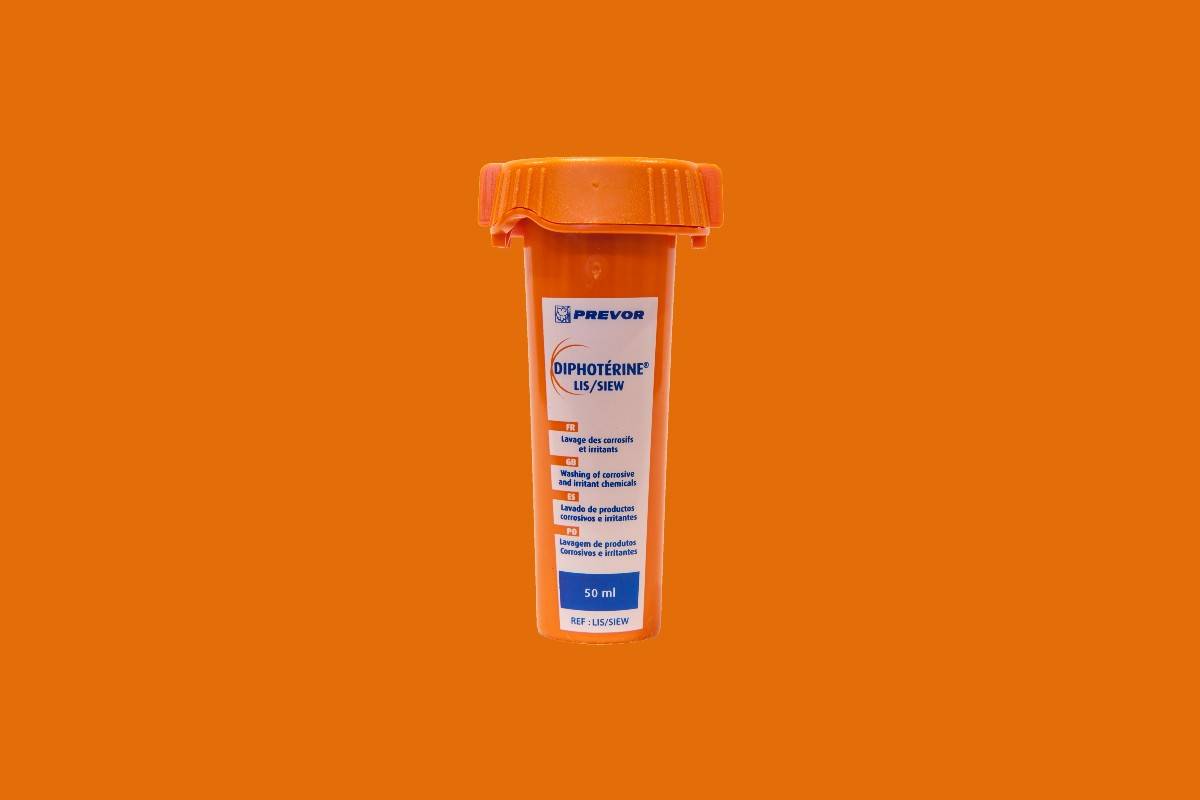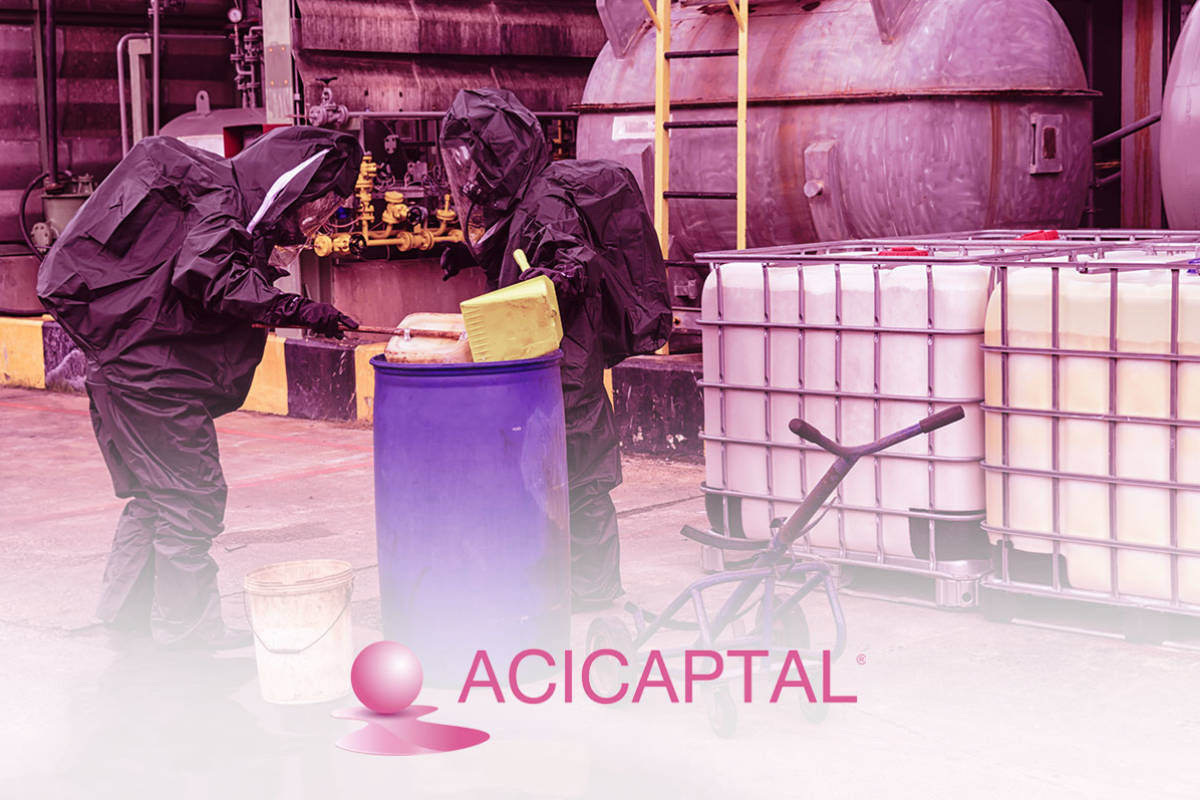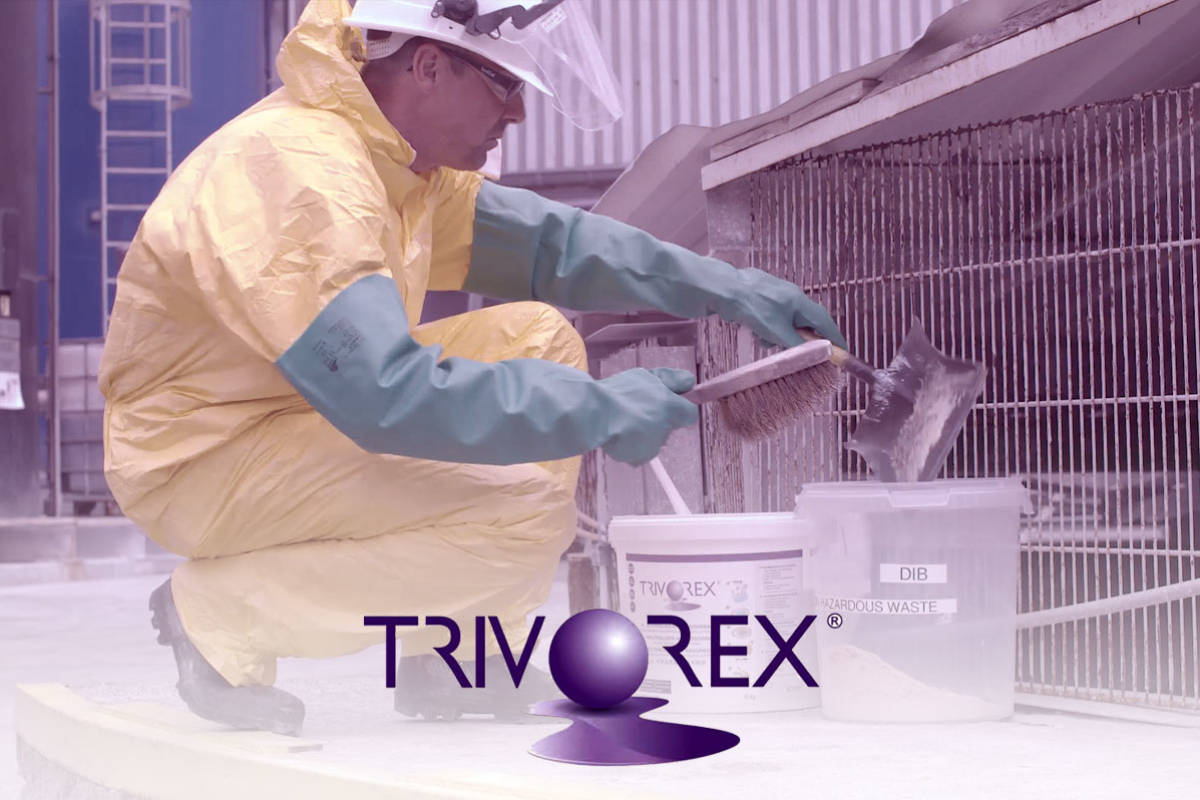Diphex.com provides the best chemical first aid solutions to keep you and your family safe. Our products are designed to protect you and your loved ones from harm, so you can breathe a little easier.
Tuesday, 30 May 2023
What Is Hydrofluoric Acid, and What Are Its Main Uses?
Beginning: Hydrofluoric acid is a highly corrosive inorganic acid meant to be handled with extra care and caution. The acid has the fastest ability to permeate and penetrate human skin and easily decalcifies bones (reduces the quantity of calcium salts in a bone or rock), leading to tissue death. Despite all these dangerous factors, hydrofluoric acid is still vital as it is adapted for several uses and purposes in moderate quantities. Let us learn more about the acid and its applications.
Chemical Properties of Hydrofluoric Acid.
- Formula: HF
- Melting Point: -83.55 °C
- Boiling Point: 19.5 °C
- Appearance: Colourless, Aqueous
- Acidity (pKa): 3.17
- pH Level: 3.4
What Are the Main Uses and Applications of Hydrofluoric Acid?
- It is used in the manufacture of several products, including herbicides, pharmaceuticals, high-octane gasoline, aluminum, plastics, electrical components, and fluorescent light bulbs.
- It is the predominant component (60%) that is added in the manufacture of refrigerants.
- It is regular acid adapted in the metal and glass etching industries. The acid can change the silicon-oxygen bonds in glass. This makes the glass material break up easily. Metals can be dissolved in the acid, with the exception of nickel.
- It is essential in the manufacture of fluorocarbons, which are chemical compounds added to refrigerants and aerosol sprays.
- The acid finds use in the preparation of electronic surfaces for silicon fabrication.
Is Hydrofluoric Acid Beneficial or Harmful to the Human Body?
Hydrofluoric acid is known as a poisonous, highly irritative, and corrosive chemical. There are several serious and fatal results due to poor handling or inhalation by humans. These may include, among others:
- Hydrofluoric acid can prove fatal when inhaled, swallowed, or comes into contact with human and live skin tissue. It may cause severe skin burns and permanent eye damage.
- When it comes into contact with humans, it can cause severe pain, swelling, redness, or skin damage.
- Inhalation of hydrofluoric acid fumes may cause serious swellings in the upper passage, bleeding, and drying of the trachea.
- It is reported to cause dental fluorosis, or staining of teeth, though it is beneficial in dental cavity prevention and treatment at low levels.
- It has effects on skeletal fluorosis, or fluoride accumulation in skeletal tissues associated with bone formation.
- It may adversely impact kidney damage, thyroid injury, anaemia, hypersensitivity, and dermatological complications.
- Inhalation causes irritation and congestion of the nose, throat, and bronchial tract. It can lead to bronchitis, coughing, or shortness of breath.
- It may affect the reproductive system and lead to malformations of foetal bones and teeth.
- Inhalation causes degenerative testicular changes in male dogs.
- It may lead to an irregular menstrual cycle in women.
Conclusion:
There are several chemicals that are beneficial for human use but are highly dangerous if handled poorly. With hydrofluoric acid, care in handling and storage are the safest ways to keep a valuable acid and chemical in the right place.
For More Info :-
https://homment.com/mz5SKF4VezlVyI9OdOf6
https://padlet.com/diphexsolutions01/diphex-hay2oewfycumgr9y
https://www.diigo.com/item/note/9sllp/x72p?k=ee3ad2b8b56fc122ddd2ad6dc00e3a2f
https://www.pearltrees.com/diphexsolutions/item519298557
https://sites.google.com/view/diphex454/home
https://truxgo.net/blogs/387940/1597327/acid-sulphuric
https://click4r.com/posts/g/9678591/
https://www.pearltrees.com/diphexsolutions/item519342508
https://www.diigo.com/item/note/9sllp/9pnq?k=cd9e66b0f7fadaae35f48ce74447fc48
https://sites.google.com/view/diphex6/home
Wednesday, 24 May 2023
What Is Hydrofluoric Acid, and What Are Its Main Uses?
Beginning: Hydrofluoric acid is a highly corrosive inorganic acid meant to be handled with extra care and caution. The acid has the fastest ability to permeate and penetrate human skin and easily decalcifies bones (reduces the quantity of calcium salts in a bone or rock), leading to tissue death. Despite all these dangerous factors, hydrofluoric acid is still vital as it is adapted for several uses and purposes in moderate quantities. Let us learn more about the acid and its applications.
Chemical Properties of Hydrofluoric Acid.
- Formula: HF
- Melting Point: -83.55 °C
- Boiling Point: 19.5 °C
- Appearance: Colourless, Aqueous
- Acidity (pKa): 3.17
- pH Level: 3.4
What Are the Main Uses and Applications of Hydrofluoric Acid?
- It is used in the manufacture of several products, including herbicides, pharmaceuticals, high-octane gasoline, aluminum, plastics, electrical components, and fluorescent light bulbs.
- It is the predominant component (60%) that is added in the manufacture of refrigerants.
- It is regular acid adapted in the metal and glass etching industries. The acid can change the silicon-oxygen bonds in glass. This makes the glass material break up easily. Metals can be dissolved in the acid, with the exception of nickel.
- It is essential in the manufacture of fluorocarbons, which are chemical compounds added to refrigerants and aerosol sprays.
- The acid finds use in the preparation of electronic surfaces for silicon fabrication.
Is Hydrofluoric Acid Beneficial or Harmful to the Human Body?
Hydrofluoric acid is known as a poisonous, highly irritative, and corrosive chemical. There are several serious and fatal results due to poor handling or inhalation by humans. These may include, among others:
- Hydrofluoric acid can prove fatal when inhaled, swallowed, or comes into contact with human and live skin tissue. It may cause severe skin burns and permanent eye damage.
- When it comes into contact with humans, it can cause severe pain, swelling, redness, or skin damage.
- Inhalation of hydrofluoric acid fumes may cause serious swellings in the upper passage, bleeding, and drying of the trachea.
- It is reported to cause dental fluorosis, or staining of teeth, though it is beneficial in dental cavity prevention and treatment at low levels.
- It has effects on skeletal fluorosis, or fluoride accumulation in skeletal tissues associated with bone formation.
- It may adversely impact kidney damage, thyroid injury, anaemia, hypersensitivity, and dermatological complications.
- Inhalation causes irritation and congestion of the nose, throat, and bronchial tract. It can lead to bronchitis, coughing, or shortness of breath.
- It may affect the reproductive system and lead to malformations of foetal bones and teeth.
- Inhalation causes degenerative testicular changes in male dogs.
- It may lead to an irregular menstrual cycle in women.
Conclusion:
There are several chemicals that are beneficial for human use but are highly dangerous if handled poorly. With hydrofluoric acid, care in handling and storage are the safest ways to keep a valuable acid and chemical in the right place.
For More Info :-
Tuesday, 23 May 2023
Effective Treatment for Chemical Burns
At Diphex.com, we understand the pain of chemical burns and the need for effective treatment. Our products are designed to provide fast relief and help you get back to living your life.
chemical burns treatment
Thursday, 18 May 2023
Taking care of Synthetic Spills: The Perils and Successful Corrosive Sulphuric Administration
Compound spills represent a critical danger to human wellbeing, the climate, and foundation. Among the different risky substances, corrosive sulphuric (sulfuric corrosive) stands apart as an especially hazardous synthetic. This article investigates the potential risks related with corrosive sulphuric spills and gives rules to really overseeing and relieving their effects.
Understanding Corrosive Sulphuric:
Corrosive sulphuric is an exceptionally destructive and harmful substance generally utilized in different modern cycles, including assembling, mining, and research facility work. It is an unmistakable, scentless fluid that can cause extreme consumes upon contact with the skin and eyes. Notwithstanding its destructive nature, it discharges harmful exhaust when presented to intensity or when blended in with different synthetic compounds.
Dangers of Corrosive Sulphuric Spills:
At the point when a spill including corrosive sulphuric happens, prompt activity is significant to limit the dangers and forestall further harm. Here are the fundamental perils related with corrosive sulphuric spills:
a. Human Wellbeing Dangers: Direct openness to corrosive sulphuric can bring about serious consumes, respiratory misery, and eye harm. Inward breath of its vapor can cause respiratory bothering, hacking, and trouble relaxing. Ingestion can prompt interior consumes and harm to the stomach related framework.
b. Natural Effect: Corrosive sulphuric spills negatively affect the climate. When delivered into water bodies or soil, it can taint and annihilate sea-going life, plants, and biological systems. It additionally adds to corrosive downpour arrangement, further harming the climate.
c. Framework Harm: Corrosive sulphuric is known for its capacity to consume different materials, including metals, cement, and elastic. Spills can consume designs, pipelines, and gear, prompting critical monetary misfortunes and security perils.
Viable Administration of Corrosive Sulphuric Spills:
To deal with corrosive sulphuric spills securely and successfully, the accompanying advances ought to be taken:
a. Individual Defensive Hardware (PPE): Appropriately prepared faculty ought to wear suitable PPE, including gloves, security goggles, face safeguards, and synthetic safe apparel, to safeguard against direct contact and inward breath of exhaust.
b. Crisis Reaction: Lay out a crisis reaction intend to guarantee a brief and coordinated response to spills. This incorporates departure strategies, correspondence conventions, and admittance to spill regulation materials, for example, retentive cushions, spill packs, and killing specialists.
c. Control and Cleanup: Immediately disconnect the spill region to forestall additionally spread. Contain the spill utilizing permeable materials and cautiously move the corrosive sulphuric to reasonable, marked compartments for removal. Completely perfect the impacted region keeping fitting rules and guidelines.
d. Proficient Help: in the event of bigger or more unsafe spills, it is prudent to contact proficient risky materials reaction groups or nearby specialists outfitted with specific aptitude and gear to securely deal with the circumstance.
Preventive Measures:
Counteraction is critical to keeping away from corrosive sulphuric spills through and through. Execute the accompanying preventive measures:
a. Safe Capacity: Store corrosive sulphuric in committed, obviously marked compartments, away from contrary substances and in a very much ventilated region. Keep all security rules for capacity, including temperature control and appropriate ventilation.
b. Preparing and Schooling: Give complete preparation to representatives taking care of corrosive sulphuric, guaranteeing they know about the risks, safe dealing with techniques, and crisis reaction conventions.
c. Risk Evaluations: Consistently lead risk appraisals to recognize likely weaknesses in the taking care of and stockpiling of corrosive sulphuric. Moderate dangers by executing proper control measures, like superior regulation frameworks and improved security conventions.
For More Info :-
What Is Hydrofluoric Acid, and What Are Its Main Uses?
Beginning: Hydrofluoric acid is a highly corrosive inorganic acid meant to be handled with extra care and caution. The acid has the fastest ability to permeate and penetrate human skin and easily decalcifies bones (reduces the quantity of calcium salts in a bone or rock), leading to tissue death. Despite all these dangerous factors, hydrofluoric acid is still vital as it is adapted for several uses and purposes in moderate quantities. Let us learn more about the acid and its applications.

Chemical Properties of Hydrofluoric Acid.
- Formula: HF
- Melting Point: -83.55 °C
- Boiling Point: 19.5 °C
- Appearance: Colourless, Aqueous
- Acidity (pKa): 3.17
- pH Level: 3.4
What Are the Main Uses and Applications of Hydrofluoric Acid?
- It is used in the manufacture of several products, including herbicides, pharmaceuticals, high-octane gasoline, aluminum, plastics, electrical components, and fluorescent light bulbs.
- It is the predominant component (60%) that is added in the manufacture of refrigerants.
- It is regular acid adapted in the metal and glass etching industries. The acid can change the silicon-oxygen bonds in glass. This makes the glass material break up easily. Metals can be dissolved in the acid, with the exception of nickel.
- It is essential in the manufacture of fluorocarbons, which are chemical compounds added to refrigerants and aerosol sprays.
- The acid finds use in the preparation of electronic surfaces for silicon fabrication.
Is Hydrofluoric Acid Beneficial or Harmful to the Human Body?
Hydrofluoric acid is known as a poisonous, highly irritative, and corrosive chemical. There are several serious and fatal results due to poor handling or inhalation by humans. These may include, among others:
- Hydrofluoric acid can prove fatal when inhaled, swallowed, or comes into contact with human and live skin tissue. It may cause severe skin burns and permanent eye damage.
- When it comes into contact with humans, it can cause severe pain, swelling, redness, or skin damage.
- Inhalation of hydrofluoric acid fumes may cause serious swellings in the upper passage, bleeding, and drying of the trachea.
- It is reported to cause dental fluorosis, or staining of teeth, though it is beneficial in dental cavity prevention and treatment at low levels.
- It has effects on skeletal fluorosis, or fluoride accumulation in skeletal tissues associated with bone formation.
- It may adversely impact kidney damage, thyroid injury, anaemia, hypersensitivity, and dermatological complications.
- Inhalation causes irritation and congestion of the nose, throat, and bronchial tract. It can lead to bronchitis, coughing, or shortness of breath.
- It may affect the reproductive system and lead to malformations of fetal bones and teeth.
- Inhalation causes degenerative testicular changes in male dogs.
- It may lead to an irregular menstrual cycle in women.
Conclusion: There are several chemicals that are beneficial for human use but are highly dangerous if handled poorly. With hydrofluoric acid, care in handling and storage are the safest ways to keep a valuable acid and chemical in the right place.
For More Info:-
chemical spills
Hexafluorine Solution
Wednesday, 10 May 2023
What are the common uses and applications of a sodium hydroxide solution?
Beginning: Chemicals have both good and bad sides if handled the wrong way. Take, for example, a sodium hydroxide solution, which is a common chemical with lots of applications in both industrial and domestic settings. But what is it anyway? And what makes it special? Let us find out more below.

What is sodium hydroxide solution?
Sodium hydroxide is a highly versatile chemical that results from chlorine. Also known as caustic soda and lye, sodium hydroxide has several uses.
Basic Formula of Sodium Hydroxide
Sodium hydroxide’s chemical formula is NaOH. It has one sodium atom linked with a hydroxyl ion, forming an alkali. Sodium is highly reactive with water. And yet still finds lots of applications and uses. These may include:
Common Uses of Sodium Hydroxide Solution
- Soap making and manufacturing: Sodium hydroxide is used in the soap-making industry as it is a major part of the soap manufacturing process. Also known as lye or caustic soda, the solution is usually mixed with fats and oils to create a chemical reaction known as saponification.
- Daily cleaning tasks: As a corrosive solution, it easily cleans different utensils and tools. Most cleaning products have sodium hydroxide.
- Kitchen and house cleaning: It is efficient in drain, oven, faucet, and tile cleaning tasks. It erases fat, grease, and grime on the floor, kitchen countertops, and appliances.
- Home disinfection and bacteria prevention: It helps keep homes and commercial and business establishments neat and clean while keeping pests and bacteria far away.
- Pharmaceutical industry: It is applicable in the formulation of various medicines and drugs.
- Paper and pulp making industry: It is applied in paper making and helps make pulp and manufacture paper.
Medical applications and uses: A special additive to most pain relief medications and in anticoagulants. It is also added to cholesterol maintenance prescriptions. And some common drugs with sodium hydroxide include aspirin, diclofenac sodium, and divalproex, among others.
- Beauty and grooming products: In diluted amounts of up to 5%, sodium hydroxide is used in beauty products like hairsprays, perfumes, beauty soaps, allergic care creams, foot talc, hair dye, makeup, nail care polish, shampoo, shaving cream, etc. It helps stabilise pH levels in beauty products.
- Aluminum products manufacturing: It is used to make aluminium products.
Physical Properties of Sodium Hydroxide
- Has colourless and crystalline pure form.
- Melts a high point of 318 °C.
- Boils at a high point of 1388 °C.
- Creates aqueous base easily, yet is non-soluble in methanol and ethanol.
- Absorbs moisture from the air.
Chemical Properties of Sodium Hydroxide
- Reacts vigorously with acids to form salts and water.
- Reacts with glass to form soluble silicates, which is why it's stored in bottles made of a non-reactive material.
- Reacts with other salts of metals in the lower electrochemical series, like copper and iron.
Conclusion: There are so many uses of sodium hydroxide solution in commercial, domestic, and industrial products. Today, keeping homes and business places safe is of paramount importance. Most home and business cleaning chemicals have sodium hydroxide components.
For More Info:-
A chemical spill is precisely what? coupled with other details
Compound responsiveness and polluting are potential results of chemical spills. Assuming examination office representatives can securely tidy up a compound spills depends upon various standards, including the risks of the manufactured materials that were spilled, the level of the spill, the presence of inverse parts, and whether you have the critical preparation and stuff. In the event that you can't pick the climate's conditions with adequate precision to guarantee your own flourishing, Don't enter the region.

Manufactured spills what is it
Substance spills are the surprising appearances of risky designed materials as solids, fluids, or gases. Reducing these breaks however much as could be expected is basic.
How do engineered spills occur?
Substance spills a critical piece of the time occur because of risky compound managing, lacking designed putting away, tank breaks, unacceptable ejection holders, and a frailty to quickly discard produced substances.
A substance spill is viewed as what class of calamity?
Substance spills and groundwater dirtying fall under the class of unsafe materials emergencies.
Searching for manufactured spills?
Diphex.com is a trailblazer in the field of compound spill control and reaction. We really want to furnish clients with the vastest affirmation of things, the opportunity to change their buys, and a confirmation to remarkable client care. For additional subtleties, kindly visit our site.
For More Info:-
Source URL:- https://sites.google.com/view/diphex84/home
Wednesday, 3 May 2023
What are the First Reactions in Response to Chemical Spills?
Beginning: There have been countless chemical spills in the history of human existence, with some leaving an indelible imprint due to their destructive effects. Chemical spills, depending on their toxic composition, can wreak havoc and cause untold suffering and casualties when not contained in time. Today, with advanced technologies to help track toxicity and monitor possible areas of danger, chemical spills have become largely controlled.

What is a chemical spill?
Chemical spills are unintended release of one or more chemical hazards that are harmful to humans and the environment. Chemical spills may manifest in the form of fires, explosions, and toxic leakages of extremely hazardous material. These can cause human illness, injury, or disability, among many other future impacts.
Why Do Chemical Spills Happen in the First Place?
- Human error and poor judgement with regard to maintenance and safety
- Unprofessional handling and storage of hazardous chemicals
- Chemical spills are caused by chemical storage tank ruptures or poor-quality containers.
- Less or no safety reviews and analyses from time to time.
- Overlooking handling guidelines in preference for personal handling methods. It is estimated that this point alone can be the single-largest cause of chemical accidents, whether at home, in the office, or in industrial setups.
Best Ways to Limit or Prevent Potential for Chemical Spills.
There are ways that are applicable to effectively deal with chemical spills in smart and safe ways. These may include, among others:
- It is vital to store all hazardous chemicals and substances in restricted and marked-off, inaccessible areas.
- Apply or use professional chemical spill kits, bunds, and spill pallets.
- Ensure chemical containers are kept on secure and safe shelves.
- Keep sufficient air-circulation space in chemical storage units.
- Use professional chemical storage levels and standards.
- Make a regular inspection of chemicals on site for leaks or deterioration.
First Major Responsive Steps to Try and Contain Chemical Spills
- Control the source of the spill: The source is always the cause of further damage and impact on both the environment and human health.
- Contain the spill: There are standard ways to limit and cut off the spread of the effect to other areas.
- Isolate the affected area: Limiting and isolating makes it easier to track the level of toxic release into the atmosphere and its effect on humans.
- Call chemical spill containment specialists.
- Clean up the chemical spill.
Standard and Professional Ways to Contain Chemical Spills
- It is good to contain the toxic dust, fumes, and vapour before they spread.
- Act fast and quickly to neutralise all toxic acids and bases:
- Ensure total control of the spread of toxic liquids using chemical spill absorbents.
- Absorb the toxic liquids.
- Collect and contain the cleanup residues.
- Dispose of the waste.
- Decontaminate affected area and equipment.
Conclusion: It is often said that prevention is better than cure; in other words, it is easier to deal with the chemical correctly and prevent spills that handle the aftermath of its costly and destructive aftermath. A chemical spill absorbent is a unique way to soak up every drop of spill to the best extent possible.
For More Info:-
Source URL:- https://sites.google.com/view/diphex34/home
Tuesday, 2 May 2023
A Chemical Spill is Precisely What? Together with Additional Details.
Compound openness and corruption are potential outcomes of chemical spills. Assuming that examination office representatives can securely tidy up a compound spill depends upon various standards, including the risks of the manufactured materials that were spilled, the level of the spill, the presence of inverse parts, and whether you have huge preparation and stuff. In the event that you can't pick the climate's conditions with adequate precision to guarantee your own flourishing, don't enter the region.

Engineered spills: what are they?
Substance spills are the surprising appearance of dangerously designed materials such as solids, fluids, or gases.
Reducing these breaks as much as could be expected is basic.
How do manufactured spills occur?
Substance spills occur a critical percentage of the time because of hazardous compound management, deficiently designed putting away, tank breaks, unacceptable ejection holders, and a weakness to quickly discard fabricated substances.
A substance spill is viewed as what class of calamity?
Substance spills and groundwater contamination fall under the category of unsafe materials emergencies."
Searching for manufactured spills?
Diphex.com is a trailblazer in the field of compound spill control and reaction. We want to furnish clients with the vastest confirmation of things, the opportunity to change their purchases, and an affirmation of remarkable client care. For additional subtleties, kindly visit our site.
For more information:
Source URL:- https://sites.google.com/view/diphex86/home
What Is Hydrofluoric Acid, and What Are Its Main Uses?
Beginning: Hydrofluoric acid is a highly corrosive inorganic acid meant to be handled with extra care and caution . The acid has the fa...

-
Beginning: Hydrofluoric acid is a highly corrosive inorganic acid meant to be handled with extra care and caution . The acid has the fa...
-
Beginning: Hydrofluoric acid is a highly corrosive inorganic acid meant to be handled with extra care and caution. The acid has the faste...
-
Diphex.com provides the best chemical first aid solutions to keep you and your family safe. Our products are designed to protect you and yo...